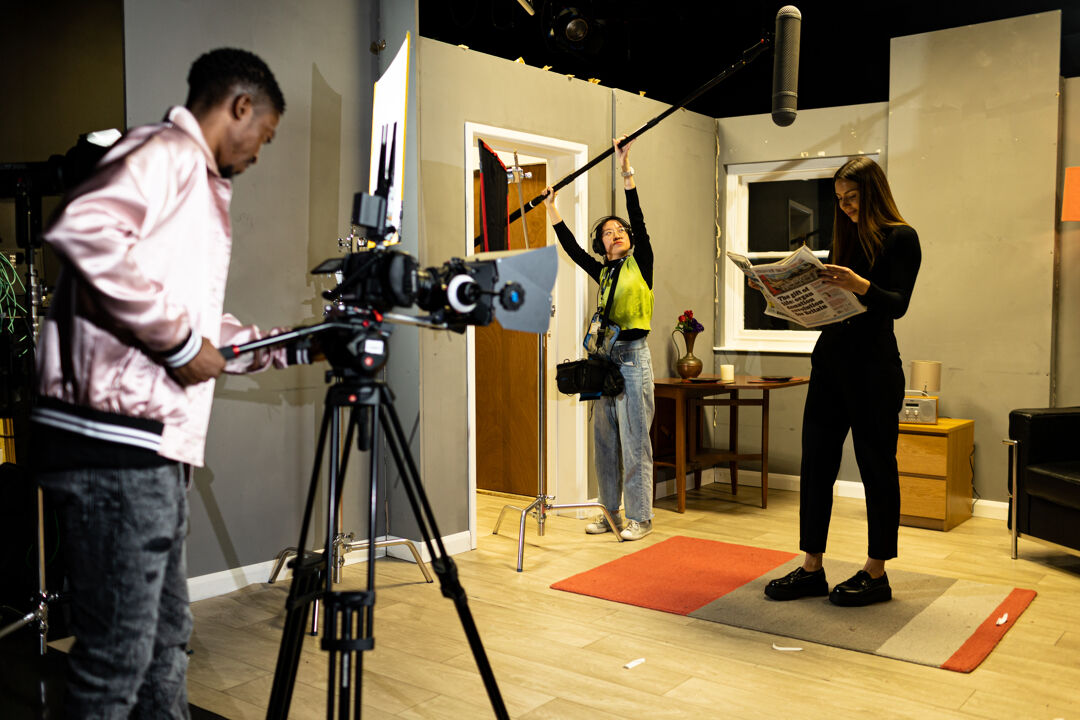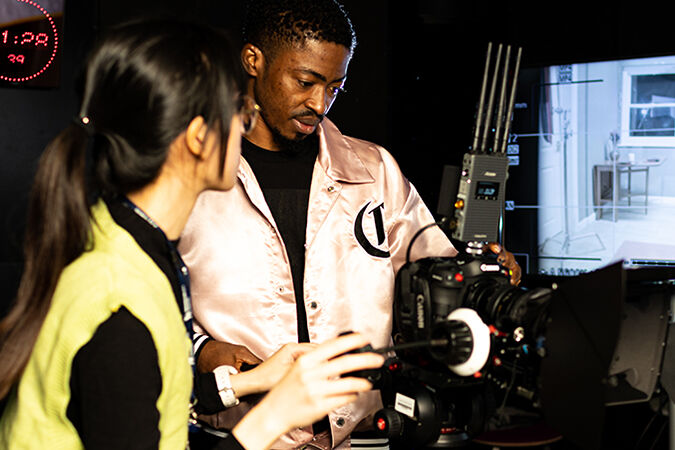Following her time studying BA (Hons) Illustration at Birmingham City University (BCU), India Hitchen graduated with a 1st class degree. Now working as an Designer Assistant for Santoro Ltd, India reflects on her decision to study at BCU, her experience of the course, and how it set her up to work in the creative industry.
Why did you choose to study at BCU?
When I was choosing a degree to study, I was slightly worried about pursuing a career in art as it didn’t feel as safe as a more 'academic' area of work. My biggest concern was not finding a stable job that would make me happy.
However, meeting the BCU tutors at the Open Day was one of the first moments I started to accept that I would be able to find a job after university. It was clear that BCU had a specific focus on preparing students for graduate jobs which I hadn’t seen at other universities. Using live briefs as part of the modules, engagement with careers week, and having the opportunity to showcase my work at New Designers in the final year is what persuaded me to choose BCU.
What was your course experience like?
The course tutors were great at encouraging me to experiment with as many areas of practice before choosing a specialism. Upon finding an area of illustration, students have their work assessed weekly by a tutor whose personal style matched with theirs most. In my case, that was Helen Wheeler, Course Director of BA (Hons) Illustration, and she was great at understanding my vision and helping me to develop a strong body of work to use for my portfolio. The other tutors were also helpful with providing a fresh perspective when I was stuck in a rut.
My favourite facility was the print room with Naomi Kent, a Printmaking Technician at the university. I was hesitant to go in during my first year because I hadn’t much experience with printing, but Naomi was supportive, and it ultimately became one of my favourite methods of creating.
Meanwhile, the creative CV workshop was the most important workshop I undertook; I used my notes to refresh my CV before applying for my current job. Additionally, the portfolio critiques where a professional assessed my work was a great opportunity - Fig Taylor was a great person to talk to and I wouldn’t have gotten her advice without the discussion being set up by the course.
Tell us about your recent experience of working alongside ex-Moonpig Creative Director, Geoff Sanderson?
As part of my course I had the opportunity to work on a live brief, designing a calling card for Geoff Sanderson. My design was chosen amongst the winners and I then got the chance to work with him, which was amazing!
Having external advice, particularly in my field of illustration, has been helpful for my career outside of my degree. Geoff has strong connections, so I had the opportunity to participate in a live brief for Moonpig and I’ve had my designs bought by the company.
Geoff was also understanding when I needed advice for a job application for a competing company, and he helped me to understand elements of the contract when I got the offer. The mentorship helped me prove to myself that I had chosen the right career path; I learnt what job I wanted to do and that I needed to push myself further to start my career.
What are your career highlights so far?
There have been a few things following university that made me feel really proud of myself. In particular, having my work featured in the BCU Inspired Festival was a great opportunity to showcase my work around the city, and seeing a giant billboard featuring my design was a great way to finish my time at BCU.
Secondly, Geoff’s mentorship and having my designs bought by Moonpig, going on sale in 2022, is something that seemed like a pipedream. I have to thank Tracy Allanson-Smith, Visual Communication Employability Coordinator, for setting up that mentorship with Geoff; that was a once in the lifetime opportunity to undertake fresh out university.
I’m also extremely lucky to have found a graduate job as an Artworker/Designer Assistant in the stationery industry for the company Santoro Ltd. Since starting the job, I’ve realised I was much more prepared for the position than I expected, purely because of the structure of the modules I completed whilst at BCU.
What are your specialist areas of expertise?
I don’t think I have a particular style of illustration - it’s constantly changing due experimentation with new brushes and finding new inspiration. I love to create patterns and use colour, which is what people notice most about my work. I’m also not afraid to make a mess.
I would struggle for ideas at university and there’s only so long you can stare at a screen. In that situation, I would always turn off my screen, get out as many paints or pens as I had, and create the messiest freestyle illustrations I could, inspired by whatever project I was working on. More often than not, I loved what I made, and it added an extra layer of development to my project. It also provided me with new inspiration for whatever digital work I had been doing prior.
What do you believe it takes to work in the creative industry?
You need to stay up to date with trends in your area of expertise. As with any career where things are constantly updating, it’s even more important that as a creative, you know what is current and what is going to get the most attention.
Even more important is the ability to predict trends. Artists are the starting point of so many trends but being able to predict what is going to be the next big thing can really put yourself ahead of everyone else.
Additionally, you need to have the ability to adapt your designs because, while your creations might be an amazing idea, will the person viewing them see it working for them? Therefore, give them options. I first picked up this advice during a Hallmark portfolio review I had through New Designers (a leading London design show, which I had the opportunity to display my work at as part of the course) with Adam Pryce.
Specifically for the greeting cards industry, an idea for a design isn’t always enough; you need it to convert into a pattern, some typography, its original form, and a character option.
How can we keep up to date with your work?
You can see what I'm up to on my Instagram @indiadawndesigns and my website.





